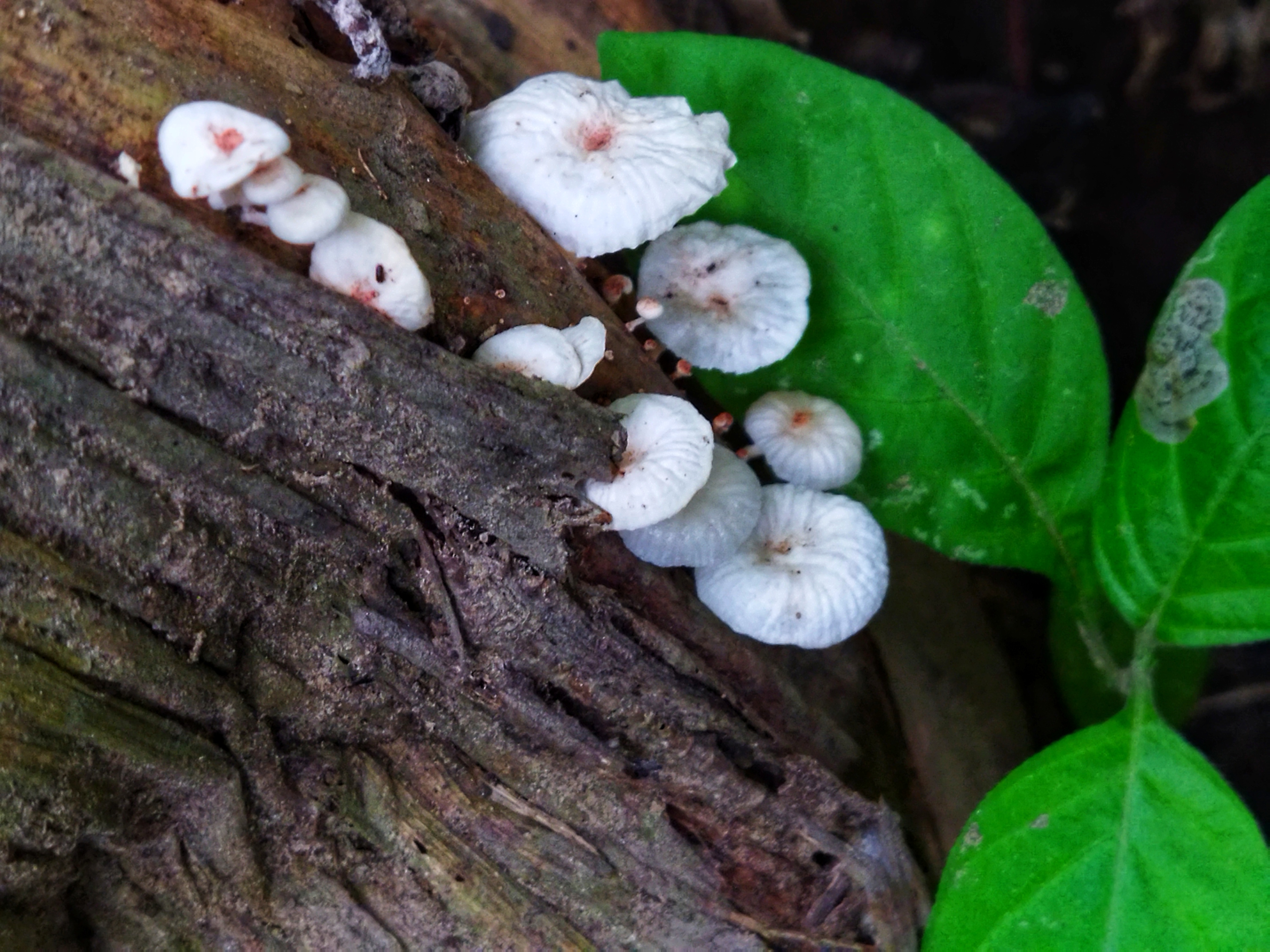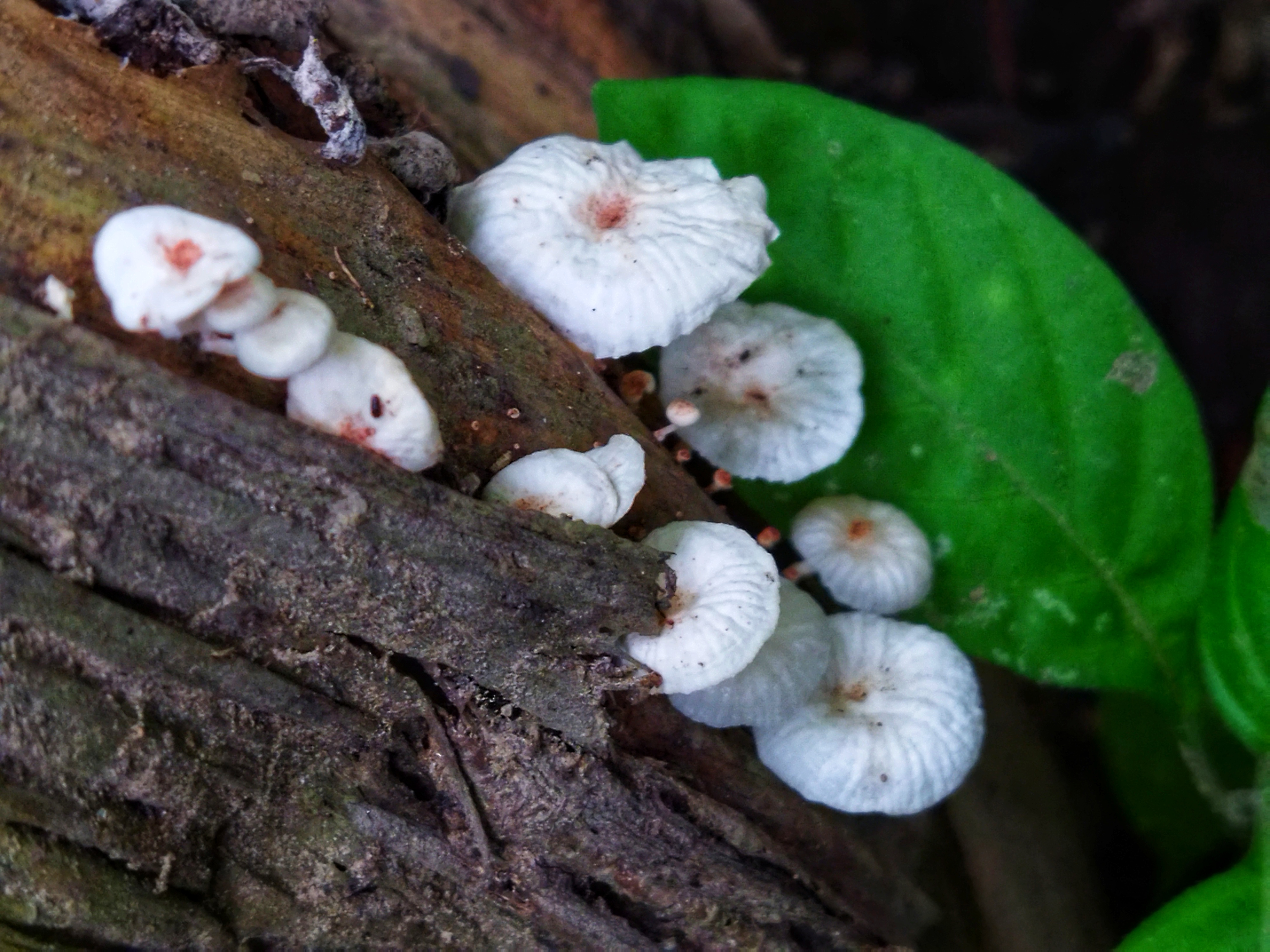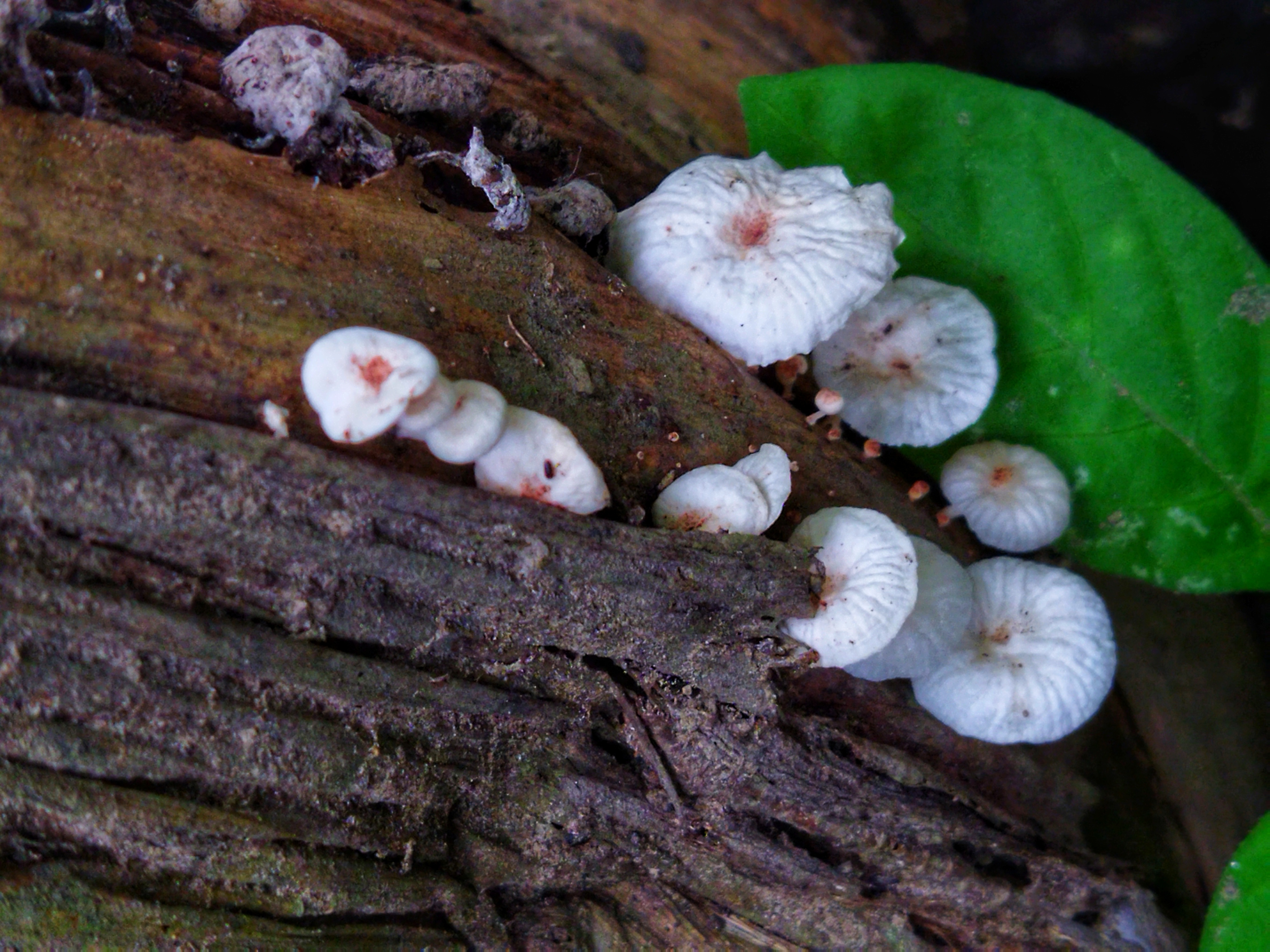It's a flashy summer sharpener that you've probably seen popping up recently. One of the most commonly found and easily recognizable is the subject of this month's focus, the Collar Parachute also called the Ferris Wheel Mushroom or Horse Hair fungus. These alternative names present a fairly accurate description of the characteristic appearance of this tiny but tough-looking fungus, which you'll find growing in clusters on leaf litter from the first rain of June to November.
The thin, fibrous stem that has the same ivory white color at the top as the dry, hard pleated hood it sustained, but darkened from brown brown to close black towards its base is one of the traits possessed by a number of other species in the Marasmius. More distinctive is the collar, or collarium to give its technical name, which separates the gills from the trunk, with the gill itself quite wide and runs out to the edge of the hat.
Ivory white pleated hat from General Parachute with navel depression in the middle.
Although it has never discovered this species on its own, this seems to be enough to distinguish it clearly. The authors also mention Marasmius wettsteinii, which only grows on the debris of fallen needles, but another key identifying feature for the Collared Parachute is that unlike these last two species, it does not grow on the leaf litter itself, but on small twigs buried in it or, for example, in lawns or other grasslands.
Collared parachute mushrooms are not the only Marasmius with collarium, but can be distinguished from their closest resemblance to a number of other features without having to use a microscope. Marasmius bulliardii, the species most likely to be confused, is slightly smaller, the lid reaching a maximum diameter of 1cm versus 1-1.5cm collared parachute, but it is also more brownish and very dark in color. Deeper navel depression at the top of the hat.
This fungus, as already mentioned in some of the focal posts of this fungus, is simply a reproductive organ that temporarily arises from an organism whose body or essential substance is a largely invisible mycelium tissue growing inside and eating its chosen substrate. Their main purpose is to produce and spread spores, which can occur either by elemental conditions such as wind and water that carry them away, or vectors of animals such as insects, mammals, birds or anything else that can transport them for miles either on their bodies or sometimes on their bodies. digestive system. That said, it is suspected that many spores do not survive during the process of consumption, so the fungus must also be able to protect the spores that develop in it.
These fungi themselves support gills (or pore tubes in the case of boletes), providing a means for their space to separate and direct them vertically, so that the surface of these spores faces down, allowing gravity to facilitate spores down the drop: gill distance is another variable that benefits different species in different ways, and another noted how far away the gills are in the thin fleshy Collar Parachute compared to much larger species such as the much fatter Parasol Fungus mentioned above. Smaller and fewer gills mean they don't have the capacity to produce as many spores as possible quickly.
Parachute mushrooms

The distinctive bottom of the Collared Parachute reveals a widely spaced gill separated from the stipe by the collarium and supported by a very small trama.
Lids and stems also serve as bait for vector animals, either to lure them away from gills or spore-producing pores, or perhaps towards them, so they may pull by accidentally carrying the spores further away. People do notice, for example, very thick fleshy bolets often filled with maggots and worms long before we can get them near a fryer.
Hair-like stems of small types such as collared parachutes obviously won't support the weight of large enough predators like snails, nor do they provide many channels for regular transport of nutrients to the lid. The fungus itself has been shown to have invested fewer resources to grow its fruit body compared to a large, thick stiped boletus, which the article author hypothesizes could act "as a store of nutrients and water.We can go into more detail about other aspects such as cap shape, chemical composition and toxicity, but in all these cases, there are results involved in optimizing the spread of spores depending on the environment. One common observation the authors make is that species that exist only in the upper levels of soil profile — for example, saprophyte species that continue the process of decomposing decaying organic matter such as leaf litter — tend to produce more. and smaller fruit bodies that individually survive in a much shorter time.
Parachute mushrooms

Parachute mushrooms

Congratulations @yusniar209! You have completed the following achievement on the Hive blockchain and have been rewarded with new badge(s) :
Your next target is to reach 50 replies.
You can view your badges on your board and compare yourself to others in the Ranking
If you no longer want to receive notifications, reply to this comment with the word
STOP